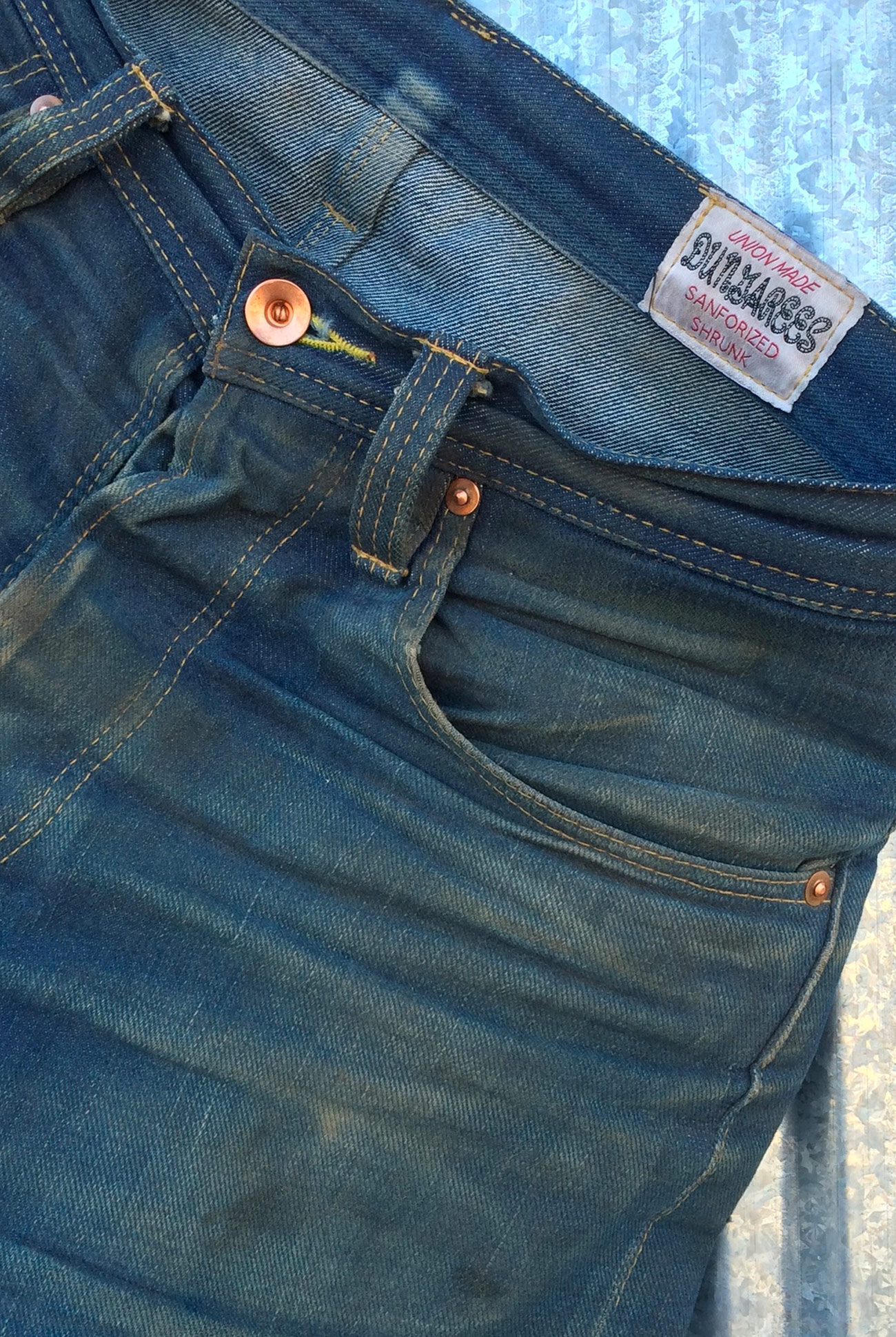Some of the best jeans in the world aren’t made in standard factories, but instead, are made by a single craftsman from start to finish. Called single-producer jeans, they come with a hefty price tag, but the quality and attention to detail are unmatched. In the US, there are a handful of brands creating jeans in this manner, but the one with the greatest variety of styles available is W.H. Ranch Dungarees. Founded by Ryan Martin in 2011, the Kansas City-based outfit offers 12 historical-reproduction jeans with prices that start at $375.
Before Martin started producing small-batch jeans, he studied apparel and textile design at Kansas State University and European pattern-making and draping in London. As online marketplaces gained traction, he found success selling ties on Esty, and also made a limited-release oil-cloth hunting jacket for Topo Designs. Today, Martin crafts each pair of jeans or denim jacket in his Heritage Collection from start to finish. And he’s hands-on in the ordering process, too: before they can make an order, prospective customers have to first do a consultation with the designer over the phone or via email.
To understand what else sets these jeans apart from even the best factory-made pants, we asked Martin to share his insights.
Q:
What was the impetus for you to start making jeans?
A:
I tried doing what I am doing now back in 2002. It was impossible for a variety of reasons. With the advent of social media, however, and the rise of the artisan movement on shops like Etsy, you could begin to reach an audience that you simply couldn’t before.
The impetus for the very first pair of W.H. Ranch Dungarees (called White Horse Trading Co. at the time), was that I wanted a pair of selvedge jeans to fit just like Dwight Yoakam’s did, which is to say high-rise, tight box, painted-on thigh and knee with a wide, stacked boot opening. Nothing existed like that on the market. I’m a classically trained, sixth-generation professional sewer and pattern maker, so, I said, “Screw it, I’ll make my own.” I posted a few pics on Instagram and off she went like a rocket ship. Now you have to wait close to two years to get a pair of my Heritage Collection jeans.
Q:
What are the elements that differentiate your jeans from standard high-end factory-produced pairs?
A:
I make every pair of Heritage Collection jeans from start to finish. I even go ship the dang things. I became obsessed with vintage denim, specifically Lee, and would spend hours every night researching and making notes of little construction details. I began collecting vintage jeans from the ’50s and ’60s and taking them apart and discovered that they simply do not make jeans now like they did back then. It would be too costly out of a factory, even at a premium price-point. This is not to mention that the construction know-how and many of the vintage machines that were used to create these jeans are gone, or at the very least too old to be used in a modern-day factory.

Every pair of Heritage jeans is made using vintage patterns I developed by reverse engineering the originals after taking them apart, not simply mimicking specifications on a modern pattern (and come to find out here is a big difference). I use historically accurate raw selvedge denim in my jeans that range from 12 to 14-ounces, sourced mostly in the US from Cone, though that mill shut down in December and was the last remaining mill manufacturing selvage denim in the US. The hardware is all sourced from the legendary YKK in Kentucky and is again, historically accurate. The thread comes from Japan and it is the only mill in the world that produces its thread in the same manner as was done pre-1960.
Making each pair by hand allows for ultimate quality control. I spend four-and-a-half hours with each pair. I know them intimately, each stitch, each rivet. You simply cannot get that out of a factory. These jeans are more akin, dare I say, to wearable art, much like custom cowboy boots. Make no mistake though, they will take the best beating you can throw at them.
Q:
What most excites you about jeans now?
A:
For selfish reasons I am excited that we are finally moving away from low-rise skinny jeans. That style looks good on an incredibly small percentage of the population. I am seeing a return to mid-rise, straight leg, good fitting jeans with a focus on quality. People are starting to vote with their pocketbooks and demanding good quality items that last. For that, I am very excited.
Bowery Blue Makers: Takayuki Echioya started his brand in 2016 based in a studio-showroom in Brooklyn’s Bed-Stuy neighbordhood. Jeans are availble in three fits (straight, high-rise and slim) and prices start at $480. Learn More: Here
Roy: Roy Slaper was making jeans for himself and friends before starting launching is brand in 2010. The Oakland-based brand is sold at sparingly at Self Edge and on its own site. Learn More: Here
